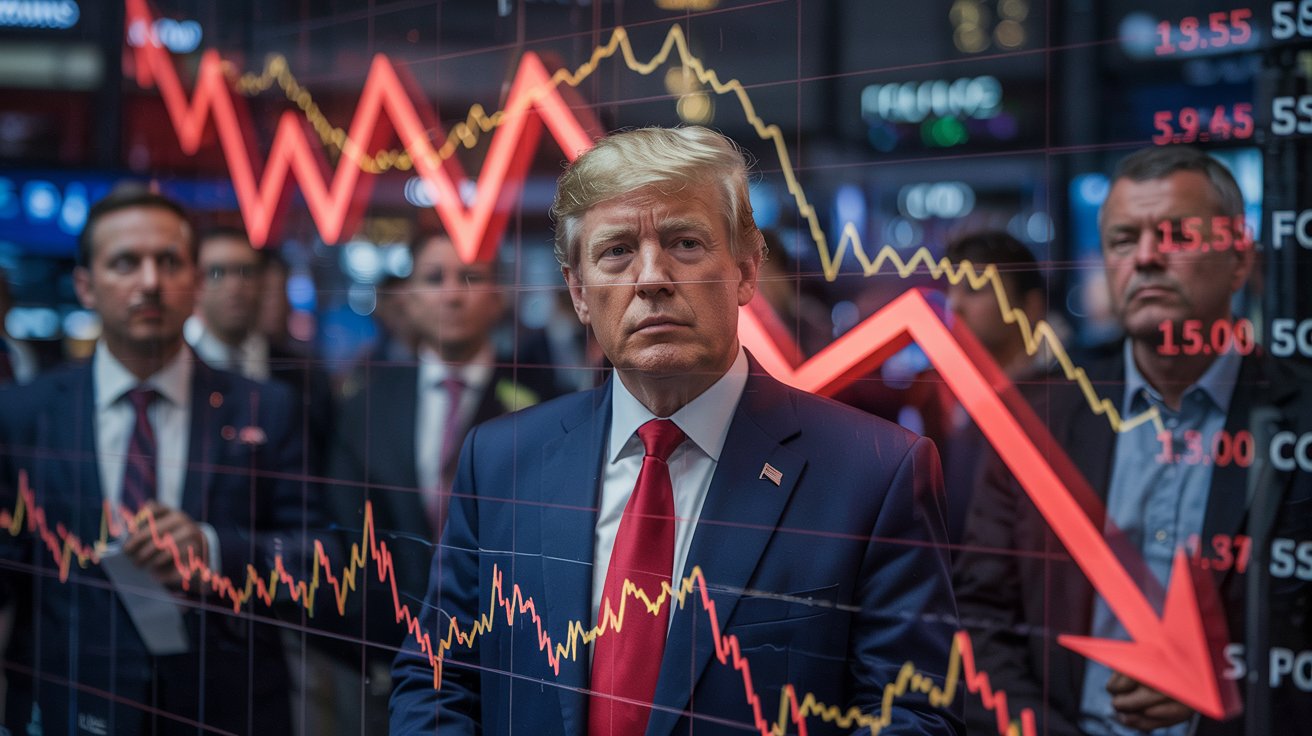President Trump’s latest tariff policy has sent shockwaves through global financial markets, triggering economic uncertainty and sparking panic among investors. These new tariffs, aimed at addressing trade imbalances, have led to a major stock market sell-off, supply chain disruptions, and rising costs for businesses and consumers alike.
Understanding the New Tariff Structure
To grasp the impact of these tariffs, let’s break down their structure and which industries are most affected:
| Country | New Tariff Rate | Key Affected Industries |
|---|---|---|
| China | 54% | Electronics, Automotive, Steel |
| European Union | 20% | Luxury Goods, Agriculture, Machinery |
| Japan | 24% | Semiconductor, Robotics, Cars |
| Vietnam | 46% | Textile, Footwear, Electronics |
| Taiwan | 32% | Semiconductor, Consumer Electronics |
These tariffs impose a heavy financial burden on U.S. importers, ultimately driving up prices for consumers and slowing economic growth.
Immediate Market Reactions
The financial markets reacted negatively as soon as the new tariff policy was announced. Here’s a snapshot of the major stock indices:
- Dow Jones Industrial Average: Fell over 1,600 points, marking its worst trading day since 2020.
- S&P 500: Declined by 4.8%, reflecting widespread investor concerns.
- Nasdaq Composite: Dropped nearly 6%, with major tech companies suffering the biggest losses.
Investors moved towards safer assets such as gold and U.S. Treasury bonds, signaling fear of prolonged instability.
Investor Strategies Amid Market Uncertainty
In response to the market turbulence, investors are considering the following strategies:
- Diversification: Reducing exposure to risk by investing in multiple sectors.
- Hedging Against Inflation: Moving funds into commodities such as gold or energy stocks.
- Holding Cash Reserves: Preparing for potential downturns by increasing liquidity.
- Real Estate Investments: Shifting capital into real estate to protect against stock volatility.
Global Responses and Potential Retaliation
Several global leaders and economic bodies have responded strongly to the tariffs:
- European Union: President Ursula von der Leyen called the tariffs a “major economic setback,” hinting at retaliatory duties on American products.
- China: Beijing announced countermeasures, increasing tariffs on U.S. agricultural goods.
- Japan: Government officials labeled the tariffs “disruptive” and pledged to explore alternative trade partnerships.
- WTO (World Trade Organization): Expressed concerns about escalating trade tensions, warning of a possible global recession.
Potential Economic Implications
The newly imposed tariffs could have a wide-reaching impact on both U.S. and global economies:
| Economic Effect | Consequences |
| Rising Consumer Prices | Higher costs for imported goods |
| Supply Chain Disruptions | Delays in production and distribution |
| Increased Inflation | Reduction in consumer purchasing power |
| Trade Wars | Other nations imposing retaliatory tariffs |
| Possible Recession | Businesses cutting costs and slowing hiring |
Conclusion
As the situation unfolds, investors, businesses, and consumers must stay informed and adapt their financial strategies accordingly. These tariffs have the potential to reshape global trade, impact stock markets, and influence long-term economic growth. The coming months will be critical in determining whether this economic shift leads to prolonged market instability or forces companies to seek innovative trade solutions.
[USnewsSphere.com / reu.]





